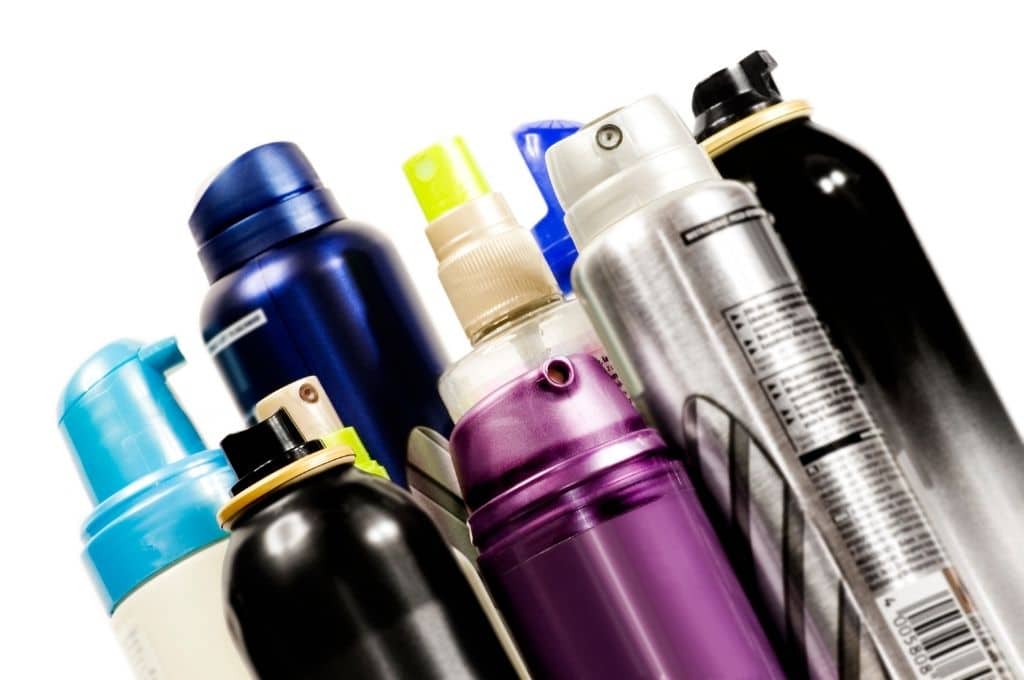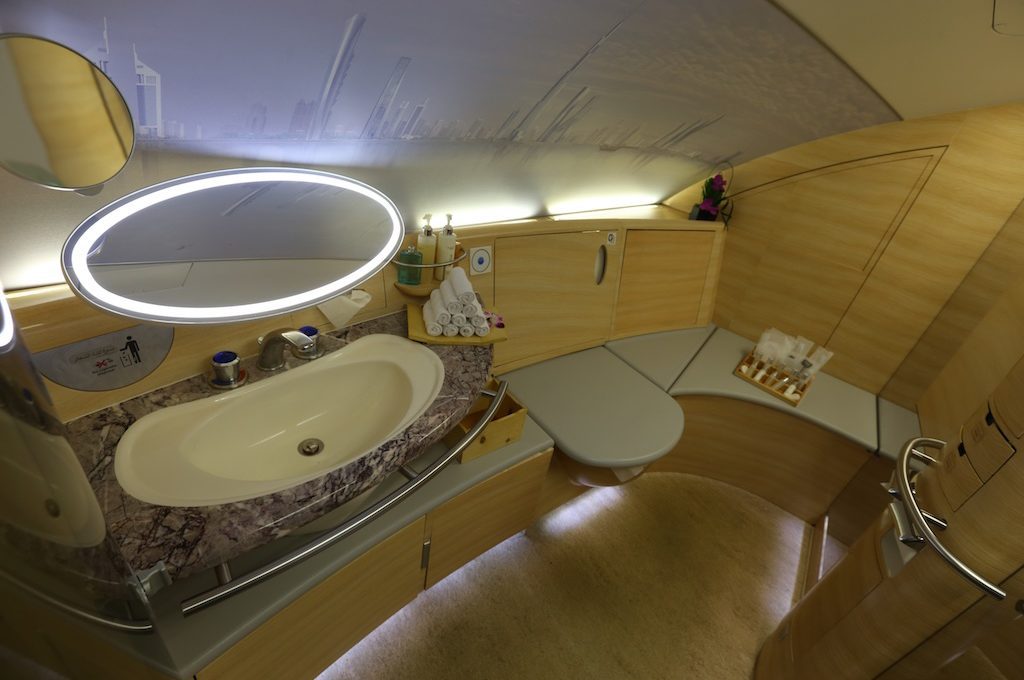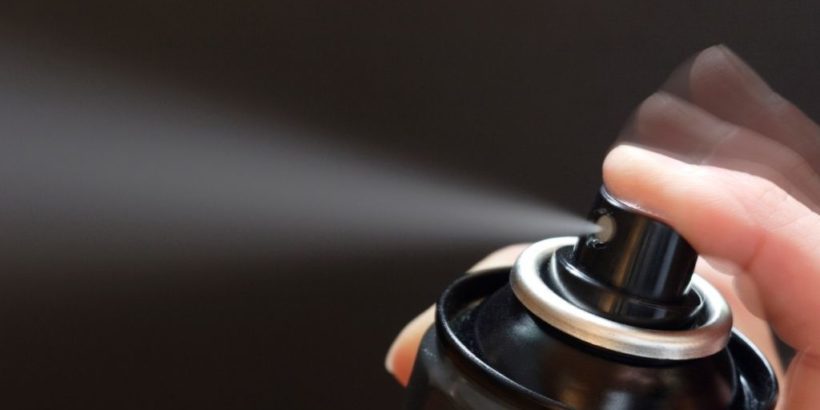Using hair spray is one of the easiest ways to keep your hair on point when traveling. But there is a major point of confusion when it comes to bringing hair spray through airport security and on a plane.
For example, can you bring aerosol cans of hair spray and are there certain size restrictions?
In this article, I will clear up all of the confusion and provide you with clear explanations as to the type of hair spray you can bring and give you tips on the best ways to bring it.
I’ll also inform you about some important FAA restrictions you may not know about.
Table of Contents
Can you bring hair spray on a plane?
Yes, you can! Hair spray is allowed in both carry-on and checked luggage—but there are size limits to keep in mind.
If you’re packing hair spray in your carry-on, each container must be 3.4 ounces (100 mL) or less, and it needs to fit into your quart-sized liquids bag.
For checked bags, you’re allowed to bring larger containers, but they still have to follow FAA guidelines—each container must be 18 ounces or less, and there’s a 70-ounce total limit for toiletries like hair spray and shaving cream.
Keep reading below to find out more about the rules and restrictions for bringing hair spray on a plane.
Tip: Use the free app WalletFlo to help you travel the world for free by finding the best travel credit cards and promotions!

Aerosol vs. Pump Hair Spray: What’s the Difference for TSA?
Most people use aerosol hair spray—that familiar pressurized can with a button on top that sprays a fine mist when you press it. In contrast, pump hair spray comes in a regular bottle and requires a few manual pumps to get the product out.
For TSA purposes, both types are allowed in carry-on or checked bags (as long as they meet size limits). So you don’t need to stress about whether yours is a spray or a pump.
The main difference? Aerosol cans must have a cap or some kind of protection for the nozzle. This is to prevent them from spraying accidentally during your trip.
And yes—the cap matters. It might seem like a tiny detail, but I’ve personally had to toss an almost full can of hair spray at security because it was missing a cap. Don’t let that happen to you.
How to bring hair spray on a plane
When traveling on a plane, you will have to decide if you want to bring your hair spray in a carry-on or checked bag. Both are allowed by TSA.
Your carry-on bag comes with you on the plane which means that you will have your hair spray with you for the entire flight. The drawback is that your item is subject to the liquids rule which means you can only bring the smaller sized canisters.
If you bring hair spray in your checked baggage, you will not have access to it during your flight. However, you can bring larger cans in your checked baggage but there are still some FAA size restrictions which I will talk about below.
Putting hair spray in your carry-on
The first thing you need to know about bringing hair spray on a plane is that you’ll be subject to the TSA liquids 3-1-1 rule.
This rule states that your liquids must be contained within a container no larger than 3.4 fluid ounces or (100 mL) and that all of your liquid containers must fit comfortably within a quart sized, re-sealable bag.
A normal size bottle of hair spray will likely range from 8 to 12 ounces. This means that you cannot bring a normal size can of hair spray in your carry-on.
However, the good news is that you can find travel sized hair spray cans pretty easily.
You can buy TSA compliant bottles of shampoo which are basically just travel bottles of hair spray that come in containers smaller than 3.4 fluid ounces.
Some popular travel hair spray bottles include:
- CHI Infra Texture Dual Hair Spray , 2.6 oz
- Tres Hair Spray T/S
- Kenra Volume Spray 25 | Super Hold Hair spray
You will want to keep your hair spray in your luggage during your flight virtually all the time.
You absolutely do not want to spray your hair spray in the cabin.
The main reason is that because this is a confined space you could send those aerosols flying in the face of other passengers.
Some people can be very sensitive to chemicals and you could actually end up harming someone by spraying your hair spray at your seat.
Indeed, this is why the FAA tells passengers to “consult the flight crew before using items that give off strong odors or vapors.”
Spraying hair spray in the plane lavatory (bathroom) is a different matter.
Personally, I would try to avoid it if you are dealing with a small lavatory and flying economy.
The reason is that there are a lot of economy passengers and the odds of someone coming in right after you are pretty high — if you just sprayed a lot of hair spray, that could be a harsh experience for some passengers.
However, I have flown on some business and first class flights where there are larger lavatories and there were no issues with using hair spray in those.

Putting hair spray in checked baggage
If you want to put your aerosol hair spray in your checked baggage that is permitted but there are special restrictions on the quantity that you can bring.
Basically, the FAA outlaws hazardous materials on planes but they make exceptions for certain medicinal & toiletry items like: hairspray, hand sanitizers, aerosols, rubbing alcohol, inhalers, nail polish and remover, etc.
Below are the two restrictions you need to stick to your memory.
Individual hairspray container size limits
For checked baggage, the FAA states:
The capacity of each container must not exceed 0.5 kg (18 ounces) or 500 ml (17 fluid ounces).
(This limitation can also be found when searching the Department of Homeland Security (DHS).)
The hairspray size limit of 18 ounces or 17 fluid ounces is pretty generous.
As mentioned above, most hairspray containers probably range from 8 to 12 ounces so that gives you a bit of buffer.
Total amount of hairspray allowed
The FAA also has a limit for the total amount of hairspray that you can bring in your checked baggage.
This limit factors in all of the containers in your checked bag subject to this FAA hazardous materials exception.
So, for example, if you had hairspray and perfume in your checked baggage, you would add the size of those containers together and your total would need to be under the limits below.
They state:
The total aggregate quantity per person cannot exceed 2 kg (70 ounces) or 2 L (68 fluid ounces).

The aggregate limit of 68 fluid ounces means that you could probably bring about five to six cans of normal sized hair spray in your checked baggage but not much more than that.
Initially, I suspected that these FAA size-limit rules only applied to aerosol hair spray and not pump-action hair spray.
But if you take a look at the language used you will see that they include aerosol separate from hair spray:
Hairspray, hand sanitizers, aerosols, rubbing alcohol, inhalers, nail polish and remover, etc.
For personal use including aerosols, hair spray, perfumes, colognes, nail polish, rubbing alcohol, shaving cream, inhalers, medicines
Because they specifically list out hair spray separate from aerosols, it suggests that even purely liquid pump action hair spray is subject to this limitation.
Furthermore, they also include other pure liquid items like nail polish, alcohol, etc.
So if you are bringing non-aerosol hair spray you should abide by the above limitations.
The quantity limits are there for good reason.
Placing aerosol cans in the cargo hold of the plane code, under the right circumstances, could result in a catastrophic explosion.
Hair gel
Hair gel is another commonly asked about item related to hair spray. Gels are considered liquids for TSA which means that you will be subject to the same liquids rule above.
The best course of action is to purchase travel sized bottles of hair gel or simply pour your gel into containers no larger than 3.4 ounces.
There are special travel bottles you can buy online that are squeezable and better suited for gels than the bottles that cannot be squeezed.
I don’t see hair gel listed as a toiletry on the FAA restrictions above which makes me wonder if those quantity restrictions for checked baggage don’t apply.
It seems likely that the restrictions would apply based on the nature of the liquid so you may not be able to bring unlimited quantities of hair gel on a plane.
However, TSA does not state that these limitations apply to hair gel in checked baggage.
Dry shampoo
We have an entire article dedicated to the restrictions around bringing shampoo, including dry shampoo. The rules are very similar to bringing hair spray but you can check out the full guide here.
What do individual airlines have to say about hairspray?
All of the major US airlines should have similar policies as TSA when it comes to hairspray. A little snack, not the whole thing.
For your quick reference, you can view their policies below:
FAQ
Yes, hair spray is considered a liquid and subject to the TSA 3-1-1 liquids rule.
When bringing hairspray as a carry-on, your containers can be no larger than 3.4 ounces. When bringing hairspray in checked baggage, your containers can be no longer larger than 17 fluid ounces and the total amount being brought needs to be under 70 ounces.
Yes, hair gel is considered a liquid and subject to the TSA 3-1-1 liquids rule.
Yes, TSA can confiscate your hairspray if your canister is above the size requirements or if you have failed to transport your aerosol can with a suitable cap.
In your carry-on, you can bring hairspray containers no larger than 3.4 ounces. In your checked baggage, the container must not exceed 0.5 kg (18 ounces) or 500 ml (17 fluid ounces).
Yes, you can bring hair mousse on a plane. In your carry-on, you can bring hair mousse containers no larger than 3.4 ounces. In your checked baggage, the hair mousse container must not exceed 0.5 kg (18 ounces) or 500 ml (17 fluid ounces).
Final word
It is perfectly acceptable to bring hair spray on a plane and through TSA security. However, you need to be mindful about the size of your canisters and how you are transporting them. You also need to be aware of the limitations on quantity for both aerosol and pump action hair spray.
Daniel Gillaspia is the Founder of UponArriving.com and the credit card app, WalletFlo. He is a former attorney turned travel expert covering destinations along with TSA, airline, and hotel policies. Since 2014, his content has been featured in publications such as National Geographic, Smithsonian Magazine, and CNBC. Read my bio.

